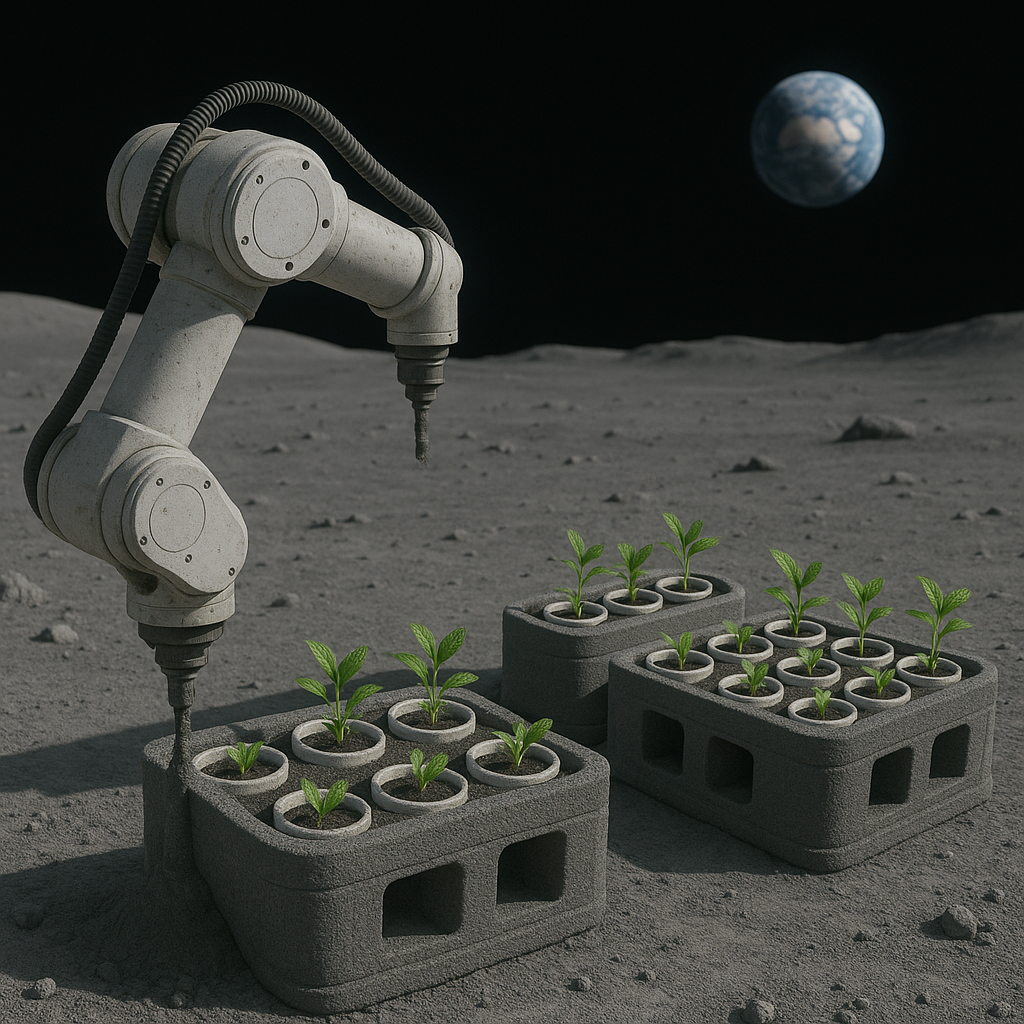From Moon Dust to Moon Harvests: Exploring Lunar Regolith
As humanity looks toward the Moon not just as a destination, but as a base for long-term exploration, a fundamental question arises: can we grow food there? At Hydro Space Sweden AB, we believe the answer is yes—and we’re preparing to prove it by studying lunar regolith simulants as part of our mission to enable food production beyond Earth. We’ve already committed to Martian regolith research. Now, we turn our attention to Earth’s closest celestial neighbor—the Moon—to investigate how plants might one day thrive on its dusty surface.
Abhijith Nag Balasubramanya
5/8/20242 min read


What Is Lunar Regolith?
Lunar regolith is the fine, powdery dust that covers the Moon’s surface, formed over billions of years by meteorite impacts. It’s completely dry, lacks organic matter, and contains no microorganisms. Unlike Earth soil, it’s sharp, electrostatically charged, and full of minerals like iron, aluminum, calcium, and silicon.
However, these properties also present challenges: lunar regolith has no natural water, limited nitrogen, and may contain nanophase iron particles that can be toxic to life. To prepare for future Moon missions, researchers use lunar regolith simulants—Earth-based materials that mimic the Moon’s surface conditions—for early testing.
Why Study It at Hydro Space?
At Hydro Space Sweden AB, our focus is sustainable food production in extreme environments. Northern Sweden already gives us insight into low-light, cold-climate farming. The Moon takes that challenge even further—with lower gravity, no atmosphere, and two-week-long days and nights.
By studying how plants respond to lunar regolith simulants in controlled environments, we aim to:
Test plant compatibility and growth in lunar soil analogues, identifying which species are most adaptable.
Develop hybrid hydroponic-lunar substrate systems that minimize water usage while maximizing nutrient delivery.
Investigate microbial or chemical treatments to make lunar regolith more biologically compatible for plant roots.
Simulate lunar light-dark cycles and partial gravity conditions, as future lunar habitats must function with limited energy and support systems.
The Bigger Picture
This study isn't just about planting seeds in Moon dust. It's about creating closed-loop, regenerative food systems that can support astronauts and, eventually, lunar settlers. NASA and other space agencies envision building Moon bases as early as the 2030s, with greenhouses forming a core part of life-support systems. Our research at Hydro Space will provide valuable groundwork for these missions.
But beyond that, lunar agriculture research can directly impact Earth. The innovations needed to grow food on the Moon—extreme efficiency in water use, soil regeneration, and nutrient recovery—have direct applications in deserts, polar regions, and even urban farming environments. It’s a two-way path: what we learn on Earth for the Moon can return home as practical solutions for food insecurity and climate-resilient farming.
What’s Next?
We are preparing to launch our Lunar Regolith Research Lab in 2025, beginning with trials using commonly used simulants like JSC-1A and LMS-1. These will help us test how root crops and leafy greens perform in Moon-like conditions.
We’ll also be partnering with material scientists and microbial researchers to explore ways to “condition” the regolith—either through organic additives, beneficial bacteria, or engineered substrates—to support healthy root systems.
Our findings will inform the development of modular lunar greenhouses that use lightweight, reusable materials and smart environmental controls. These systems could one day be 3D printed directly on the Moon using local regolith—reducing the need to ship materials from Earth.
Join Us on the Lunar Frontier
At Hydro Space Sweden AB, we’re growing more than plants—we’re growing the future of sustainable life in space. The Moon is our next testbed, and your support, collaboration, and curiosity help drive this journey forward.
Follow our work, share our vision, and stay tuned as we continue bridging the gap between today’s technology and tomorrow’s off-world agriculture.
